og-vision/iStock/GettyImages
Varieties of clam chowder include New England, Rhode Island and Manhattan, among others. Though each of these variations contains slightly different types of liquid to make up the broth, the balance of the ingredients, namely clams, potatoes, celery and onions, are the same. You can freeze each kind of chowder for later meals, thawing and reheating them as necessary.
Cool Down
Once you've cooked the clam chowder, remove it from the heat and allow it to cool for 20 to 30 minutes. Intermittently stir the chowder to prevent a skin from forming as it cools. For food safety reasons, the clam chowder should not be left out for more than two hours after cooking.
Freezing Containers
Pour the clam chowder into sealable bags or airtight freezer container. If you still feel the chowder is slightly warm, let it cool for another 10 to 15 minutes until it approaches room temperature. When you're using sealable freezer bags, place those bags inside a larger bowl when you're pouring the chowder to reduce the risk of spilling.
Freezer Storage
Freezing food at 0 degrees Fahrenheit slows bacteria growth to the point where foods are indefinitely safe to eat, advises U.S. Department of Agriculture. But, the taste and texture of the food declines over time. So, it's best to eat frozen chowder within two to three months of freezing in airtight containers or sealable plastic freezer bags.
Thawing Chowder
To thaw the chowder, take the containers or freezer bags out of the freezer and place them in a larger bowl or sink filled with hot water for five to 10 minutes until the chowder can be broken into chunks. Then, pour the contents into a saucepan over medium-high heat, stirring until the chowder is once again completely liquid. Cover the saucepan and bring the chowder to a boil for one minute. Allow it to cool slightly before serving. You can add water, broth or milk to the chowder to replace some of the liquid that might have evaporated during the re-heating process. Use the same type of liquid that was used in the original recipe. For example, use milk or cream for New England clam chowder or a touch of clam juice and water for Rhode Island clam chowder.
Related Articles
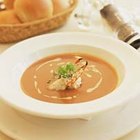
How to Make Crab Bisque
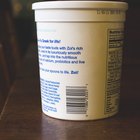
How to Freeze Greek Yogurt
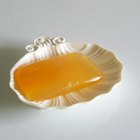
Recipe for How to Make Glycerin Soap ...

How to Boil Conch in the Shell
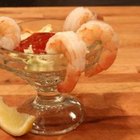
How to Make Shrimp Cocktail

How Long Do Shucked Oysters Stay Fresh?

How to Make Soup Out of Pulp From ...

How to Boil Frozen Conch
Homemade Cream of Mushroom Soup Recipe

How to Thaw Frozen Cooked Shrimp Quickly

How to Cook Couscous With Chicken Broth

How to Cook Crawfish

How to Make Sour Cream Out of Heavy ...

What Can I Use Instead of Cream of ...
How to Cook & Freeze Fresh San Marzano ...
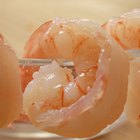
How to Cook Langostinos

How to Cook Fresh Oysters to Make Stew

Food Ideas for a Nautical Party

How to Make Corn Soup
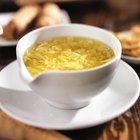
Calories in a Pint of Egg Drop Soup
References
Resources
Writer Bio
Scott Damon is a Web content specialist who has written for a multitude of websites dating back to 2007. Damon covers a variety of topics including personal finance, small business, sports, food and travel, among many others.